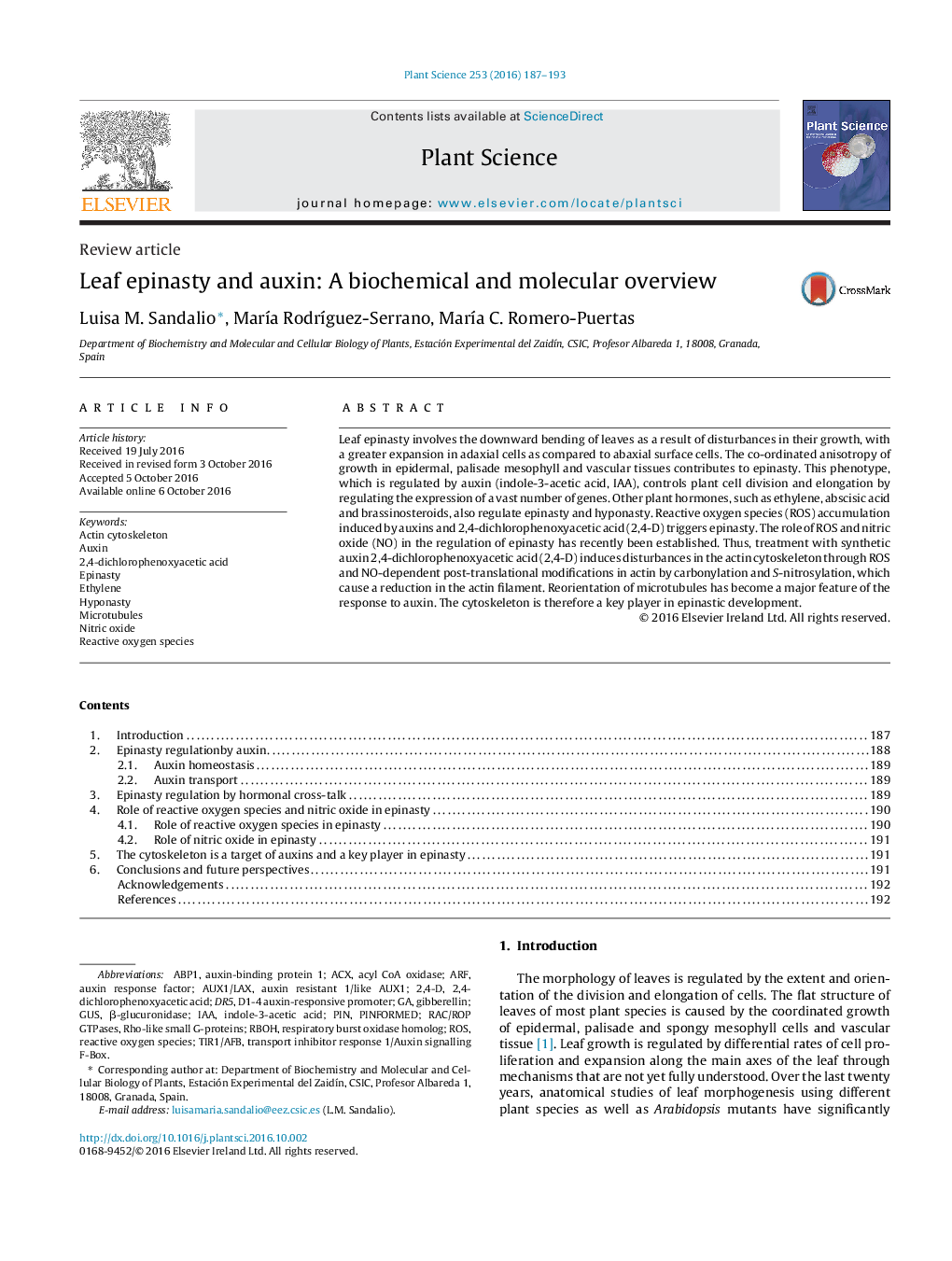| Article ID | Journal | Published Year | Pages | File Type |
|---|---|---|---|---|
| 5515873 | Plant Science | 2016 | 7 Pages |
â¢Leaf epinasty involves a downward bending of leaves.â¢Epinasty is due to differential auxin accumulation in adaxial cells.â¢Epinasty is regulated by ROS and NO.â¢Peroxisomes are a key source of ROS in epinasty development.â¢Cytoskeleton is a target for auxins and a key player in epinasty.
Leaf epinasty involves the downward bending of leaves as a result of disturbances in their growth, with a greater expansion in adaxial cells as compared to abaxial surface cells. The co-ordinated anisotropy of growth in epidermal, palisade mesophyll and vascular tissues contributes to epinasty. This phenotype, which is regulated by auxin (indole-3-acetic acid, IAA), controls plant cell division and elongation by regulating the expression of a vast number of genes. Other plant hormones, such as ethylene, abscisic acid and brassinosteroids, also regulate epinasty and hyponasty. Reactive oxygen species (ROS) accumulation induced by auxins and 2,4-dichlorophenoxyacetic acid (2,4-D) triggers epinasty. The role of ROS and nitric oxide (NO) in the regulation of epinasty has recently been established. Thus, treatment with synthetic auxin 2,4-dichlorophenoxyacetic acid (2,4-D) induces disturbances in the actin cytoskeleton through ROS and NO-dependent post-translational modifications in actin by carbonylation and S-nitrosylation, which cause a reduction in the actin filament. Reorientation of microtubules has become a major feature of the response to auxin. The cytoskeleton is therefore a key player in epinastic development.
Graphical abstractDownload full-size image
